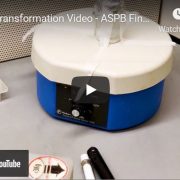Informational interview with Dr. Viktoriya Coneva, Postdoc at a PUI
By Hannah Thomas, Conviron Scholar
Current position:
Post-doc research associate at Kenyon College in Ohio. This position is unique in that it has a strong teaching and mentorship emphasis. She teaching 1 class every semester and mentors 5-6 undergraduate students in the lab.
A typical workday:
Because Kenyon College is a PUI, her time is evenly divided between teaching and research. As an NSF funded post-doc, she has important timelines to follow for data collection. As part of this, she works and mentors many undergraduate students within the lab she works in. She must balance this with teaching a course. This means providing 5 office hours each week to students, making individual appointments, as well as preparing or leading class.
Kenyon College:
Kenyon College is a private liberal arts college in Gambier, Ohio. There are just over 1500 undergraduate students in attendance. Classes are very small and consist of around 10 students. As an instructor in this type of setting Dr. Coneva has had to learn to teach in a manner different than she experienced in her own undergraduate degree. As an instructor, she has learned to ask the right questions and lead discussions rather than lecture. Course are more engaging and there is much dialogue. She was surprised by the size and geography of Ohio. Many PUIs are located in smaller, more isolated areas and that is something that you have to adjust to.
Challenges and Successes:
Challenges in a PUI include balancing research and teaching. PUIs place a strong important on teaching and it is often difficult to conduct research as quickly as in larger institutions. Dr. Coneva said, “You should want to teach your craft rather than practice your craft”. Multitasking is an important skill to tackle this. It can also be difficult to stay in touch with your greater research field because PUIs tend to have small departments that all work on very different questions and systems. Teaching at a PUI is also very rewarding though. Dr. Coneva mentioned that it is very rewarding to watch a student understand a topic after sturggling. She loves interacting with the students and hopes to continue on this tract and stay at a PUI in the future.
Advice for an early PhD Student:
Had Dr. Coneva known that she would end up at a PUI, she would have taken on more independent teaching earlier in her career. This means solo teaching, not just TA-ships. While PUIs do care about your research, it is also very important that your research could fit with undergraduate research assistants and that you would be a successful mentor. Most professors at PUIs have 1 post-doc but it is also possible to act as a visiting assistant professor to gain teaching experience and then move into a PUI without a post-doc.
Dr. Coneva emphasized that there is now an ASPB PUI group that researchers can join to help build a sense of community.







